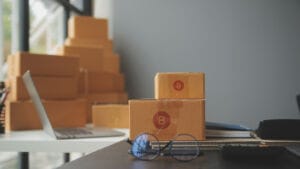Minesweeper is more than just a game on your computer—it’s a classic. For decades, it has been one of the most recognizable games on Windows, preinstalled on countless PCs since the early 1990s. Despite its simple interface and straightforward mechanics, Minesweeper is a game that has stumped players for years. Even though many people have spent hours clicking away at the grid, the rules often remain elusive to casual players.
This article will explain the rules of Minesweeper in detail and guide you through the strategies that can turn a guessing game into a logical puzzle. Whether you’re new to Minesweeper or looking to refine your skills, this deep dive will help you uncover its hidden complexity.

What Is the Goal of Minesweeper?
At first glance, Minesweeper can seem like a pure game of chance, where you randomly click squares in the hope of avoiding bombs. For many, the game is nothing more than a nostalgic relic—one of those things that came with a new computer. However, once you delve into the game mechanics, you’ll see that it’s actually a sophisticated puzzle game that tests your logic and deduction skills.
The objective of Minesweeper is to clear all the safe squares on the grid while avoiding the ones that hide bombs. Sounds simple, right? But there’s a twist. As you reveal squares, some will display numbers, which indicate how many bombs are hiding in the surrounding eight squares. Your task is to use these numbers to deduce where the bombs are located.
For each square that you think contains a bomb, you can place a red flag on it to mark it and avoid accidentally clicking it later. If you successfully uncover all the safe squares, you win the game. But if you click on a bomb, the game ends instantly, and the minefield is revealed.
Mines Gambling Game
You can also raise the stakes and try your hand at the gambling version of this game, where each move comes with the thrill of potential rewards and risks. Mines is a popular gambling game often found in online casinos, blending elements of risk and strategy. Inspired by the classic Minesweeper game, Mines gambling challenges players to uncover safe spots on a grid while avoiding hidden mines that can end the game instantly. Each time a player uncovers a safe spot, their winnings increase, but so does the risk. Players can choose to cash out at any time or continue uncovering more spots for higher rewards. The game appeals to those who enjoy high-stakes decision-making, where careful analysis and a bit of luck can lead to significant payouts.

Rules of Minesweeper: How It Works
When you start a game of Minesweeper, the grid is covered with hidden squares. Underneath these squares, there are either bombs or safe zones. Each click on a safe square will reveal a number that tells you how many bombs are hidden in the adjacent squares. Each square is surrounded by up to eight others, and the number you reveal is a critical clue in your mission to avoid bombs.
For example, let’s say you reveal a square with the number ‘2.’ This means there are exactly two bombs hidden in the eight surrounding ones. Your job is to figure out which squares contain the bombs and which are safe to uncover. By carefully analyzing the numbers from the adjacent squares, you can begin to piece together where the bombs are hidden.
Step-by-Step Breakdown:
- Uncover a Square: Start by clicking a square—don’t worry, the first click is always safe. If you uncover a number, it will tell you how many bombs are in the surrounding squares.
- Analyze the Numbers: The numbers are your guide. If you see a ‘1,’ you know there’s one bomb in the surrounding eight squares. If it’s a ‘3,’ there are three bombs hidden nearby. Use these clues to deduce which ones are safe and which likely hide bombs.
- Place Red Flags: Once you’ve deduced that a square likely contains a bomb, right-click on it to place a red flag. This marks the square so you won’t accidentally click it later. You can remove a flag by right-clicking the square again.
- Clear the Board: Continue revealing safe squares, flagging bombs as you go. Your goal is to uncover all the bomb-free squares without triggering a mine. If you do uncover all safe squares, you win the game.
Minesweeper is a game of logic. By using the clues provided by the numbers, you can systematically eliminate safe squares and mark bombs. But it’s not just about logic—there’s always a little bit of luck involved, especially in harder levels where your first click can make or break your chances.
Key Strategies for Minesweeper Success
1. Start in the Middle
One of the best strategies for Minesweeper is to make your first click in the middle of the grid. The first you choose is guaranteed to be safe, but selecting one from the edge can limit your options for future moves. By starting in the middle, you’ll have a better chance of revealing a larger area, which will give you more clues right from the start.
2. Work With Patterns
As you play, you’ll begin to recognize common patterns that indicate where bombs are likely to be. For instance, if you see a ‘1’ that touches only one unrevealed square, it’s a clear sign that there’s a bomb hiding there. Similarly, if a ‘2’ touches two squares, both of those squares contain bombs.
Other patterns require more advanced logic. For example, if a ‘2’ is adjacent to a ‘1,’ and both touch the same unrevealed square, you can deduce that only one of those squares contains a bomb, which helps you determine which are safe. These patterns become second nature with practice and are key to mastering the game.
3. Use Red Flags Sparingly
Red flags are your tools for marking suspected bomb locations, but you don’t want to use them too liberally. Overflagging can confuse you later on, making it harder to remember which squares you’ve definitively ruled as bombs and which were just guesses. Use flags when you are certain about the presence of a bomb—otherwise, it’s better to keep your options open and rely on logic to solve the puzzle.
4. Avoid Blind Guesses
While Minesweeper is largely a game of logic, sometimes the situation will force you to guess. However, it’s best to avoid guessing unless absolutely necessary. If you’re unsure about a section of the board, move on to another area where you can apply logic to solve the puzzle. Often, this will give you more information that you can use to go back and tackle the uncertain area.
When you do have to guess, try to minimize the risk. For example, if you have a ‘1’ next to only one unopened square, that one is likely to contain a bomb. In contrast, a ‘3’ next to three unopened squares presents higher odds of hitting a mine.
5. Learn From Mistakes
Minesweeper is a game of trial and error. No matter how careful you are, you’ll lose games—especially at the beginning. The key to improving is learning from your mistakes. Each time you hit a bomb, review the grid and try to figure out what you missed. Over time, you’ll start to recognize patterns and avoid making the same errors in future games.
6. Blank Spaces Are Safe Zones
Sometimes, when you click a square, it will reveal a blank space with no numbers. This means there are no bombs in the immediate vicinity, giving you a larger area to explore safely. These blank spaces can be particularly useful in opening up new sections of the board and providing you with more clues for the remaining squares.
Advanced Minesweeper Tips for Experienced Players
Once you’ve mastered the basic mechanics and strategies, you can take your Minesweeper game to the next level with these advanced tips:
- Understand Probability: As the grid gets smaller, your ability to make educated guesses improves. In some cases, you’ll need to rely on probability to determine which are safer to click. For example, if you have a choice between two squares, and one is surrounded by fewer unopened squares, it’s usually safer to pick that one.
- Memorize Common Bomb Configurations: Over time, you’ll notice that certain bomb configurations occur frequently. Memorizing these patterns will help you solve the puzzle more quickly in future games.
- Edge Strategies: Mines on the edges of the grid can be trickier to uncover since fewer surrounding squares are available for clues. Focus on edge squares early in the game to avoid being cornered later on with limited options.
Practice Makes Perfect: The Path to Mastery
The best way to improve at Minesweeper is through practice. Each game presents a new puzzle, and the more you play, the better you’ll become at recognizing patterns, making educated guesses, and improving your overall strategy. Eventually, you’ll be able to clear grids faster and more efficiently, relying less on luck and more on logical deduction.
Conclusion: The Logic Behind the Classic
Minesweeper is more than just a game of chance—it’s a puzzle that challenges your critical thinking and problem-solving skills. By learning the rules, recognizing patterns, and practicing regularly, you can improve your success rate and find more enjoyment in this classic game. From understanding basic number clues to mastering advanced strategies, Minesweeper offers endless challenges for players of all skill levels.
So the next time you open Minesweeper, remember: it’s not about luck, it’s about logic.




